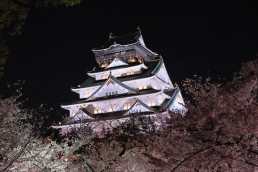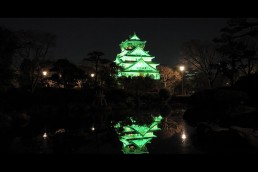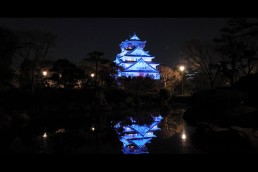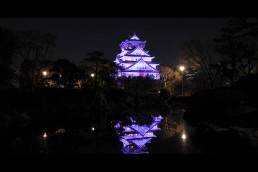This website uses cookies so that we can provide you with the best user experience possible. Cookie information is stored in your browser and performs functions such as recognising you when you return to our website and helping our team to understand which sections of the website you find most interesting and useful.
Osaka Castle
ProjectOsaka CastleLocationOsaka, JapanLighting DesignerMOTOKO ISHIIInstallerPharos Architectural ControlsSubmitted by Pharos Architectural Controls
The conversion of the lighting system at the Tower of Osaka Castle presented a series of complex challenges that demanded innovative solutions and meticulous planning to overcome.
The foremost challenge was to modernise the lighting infrastructure while preserving the historical integrity and architectural significance of the castle tower. Ensuring that the new LED lighting seamlessly blended with the ancient stone walls and traditional design elements required a delicate balance. To address this, extensive consultations were held with heritage experts, architects, and lighting designers to develop a lighting scheme that accentuated the castle’s beauty without compromising its authenticity.
Additionally, the sheer scale and complexity of the project posed logistical challenges. With the tower serving as a beloved cultural landmark, every effort was made to minimise disruption to its daily operations and visitor experience. This necessitated careful scheduling and strategic installation techniques to ensure a seamless transition to the new lighting scheme.
The project team had to contend with the unique environmental conditions surrounding the tower, including exposure to harsh weather conditions. Robust and weather-resistant lighting fixtures and lighting control solutions were imperative to withstand the rigours of the outdoor environment while maintaining optimal performance and reliability.
The conversion of LEDs throughout Osaka Castle was needed to create a lit environment that was appealing to locals and visitors, whilst maintaining the original design principles. Installation of full-colour LED lighting solutions that were controlled by a single-universe Designer LPC (Lighting Playback Controller) from Pharos Architectural Controls, offered the ability to illuminate the keep and the surrounding environment in a dynamic array of colours. This has enabled the tower to be appreciated even during dark hours and become even more of an attraction as night-time falls.
The Designer LPC features individually controllable and independently running timelines and scenes. It offers the freedom of real-time manual overrides, with the versatility of powerful show control and integration features. With a compact form and minimal power requirements, the LPC can be installed anywhere.
The project also features Pharos Cloud, allowing for simple and secure remote management and device interoperability from anywhere in the world, and at any time of day or night.
The Tower of Osaka Castle project represents a remarkable union of historical preservation, technological innovation, and sustainable design, making it a truly deserving winner.
This project stands as a beacon of sustainability. As a landmark lighting conversion, it aimed to reduce the structure’s electricity consumption and operating costs in line with the UN’s Sustainable Development Goals.
By transitioning to energy-efficient LED technology, which cut the number of devices by around half, and implementing advanced lighting controls, the project has achieved a staggering 85% reduction in annual energy consumption and significantly decreased carbon dioxide emissions. These impressive achievements not only contribute to the tower’s operational efficiency but also align with global efforts to combat climate change.
The integration of IoT lighting through cloud computing represents a significant leap forward in facilities management and maintenance. The Pharos Designer LPC provides unparalleled flexibility and control, allowing for real-time adjustments and seamless integration with the cloud portal for remote monitoring and management. This innovative approach ensures the long-term sustainability and reliability of the lighting system, enhancing its value as a cultural asset for generations to come.
Beyond its technical achievements, this project embodies the spirit of collaboration and excellence. The partnership between lighting designers, technology providers, and installation teams demonstrates a shared commitment to delivering exceptional results while overcoming complex challenges. Through meticulous planning, coordination, and execution, the project team has successfully preserved the historical integrity of Osaka Castle while ushering it into a new era of illumination energy efficiency, and sustainability.






